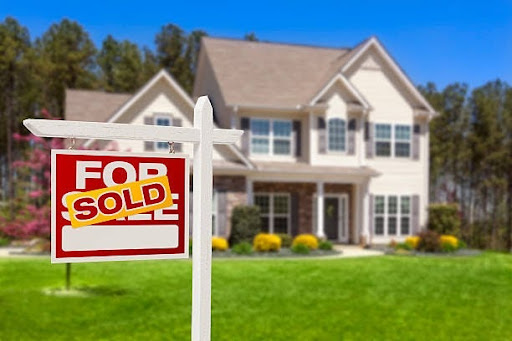
The popularity of alternative housing options—perhaps in concert with the rise in work-from-home jobs—has steadily increased over the past three or so years, though the concept has been around much longer. From tiny homes to prefabricated homes and container homes, there are now various unique living options on the market, each with its own advantages and potential drawbacks.
This guide will explore the available alternative housing types and discuss why they’re becoming increasingly popular. You’ll also learn about some of the potential drawbacks to these types of housing and provide resources for those who are interested in learning more. Looking to downsize? Live more sustainably by repurposing Conex containers? Just want something different? This guide will outline the pros and cons of alternative living and help you decide if it’s right for you.
What’s Making Homebuyers Seek Alternative Housing?
Cost, convenience, sustainability, and personal preference are the main factors driving the renewed interest in alternative housing options.
- Cost: Many types of alternative housing can be significantly less expensive than traditional homes. Tiny homes and prefabricated homes take less material and labor to make, making them more affordable for those on a budget. Container homes are almost always cheaper than traditional ones since the containers are being reused and repurposed.
- Convenience: Alternative housing options can be much quicker to build than traditional homes. Tiny homes can be completed in less than a month; prefab homes can take just a bit longer. Container homes are usually the quickest, with assembly possible in just a few days.
- Sustainability: Alternative housing is more sustainable than traditional homes due to the reduced energy and resource use and features that make them more energy-efficient and environmentally friendly.
- Personal Preference: Perhaps the most important factor is personal preference—some people simply prefer unconventional housing options over traditional ones. Unique layouts, a modern look, or the industrial vibe of a container home aren’t for everyone, but they may be exactly what some are looking for!
No matter your reason for an interest in alternative housing—financial, spatial, environmental, or a general aversion to interior design for colonial-style homes—rest assured that there are more and more options. You’re in good company!
Types of Alternative Living Spaces and their Benefits
Alternative housing is a relatively new concept, and while there may soon be many more variations, it currently encompasses three main types of homes:
Prefabricated Homes: Prefab homes are built in a factory, then shipped and assembled on the buyer’s property. They often come with pre-built walls and plumbing, making them much quicker to build than traditional homes. The quality of these homes is typically high, as they are constructed in highly controlled environments.
Container Homes: Container homes are made from shipping containers and can be assembled in a matter of days. They are often less expensive than traditional homes and offer a unique industrial look that many people find appealing.Tiny Homes: Tiny homes are small, often mobile homes that can be built quickly and with minimal resources. They offer an affordable way to downsize without sacrificing the comforts of home.
Considerations Before Taking the Leap Into Alternative Housing
You can’t make an informed decision based solely on the advantages of alternative housing; the drawbacks need to be factored in, too. With zoning and building regulations, these types of homes might not be permitted in some areas. Additionally, certain amenities found in more conventional housing may not be present in some alternative housing options, such as tiny homes and container homes.
It’s crucial to ensure that this type of home fits your lifestyle before taking the plunge into alternative living. Alternative housing options are ultimately gaining popularity because of their affordability, practicality, sustainability, and distinctive design advantages. These homes are undoubtedly a great way to downsize and save money on housing costs, despite the possibility of some disadvantages that should be considered.
Benefits of Investing in Alternative Living Spaces
Alternative housing options can also be a great investment. With the trend of alternative living, these homes are becoming increasingly valuable and sought-after. For homebuyers, there are several benefits to investing in an alternative home:
- Relatively low upfront costs, making them more affordable than traditional homes
- Require less energy and resources to construct and to live in, increasing sustainability
- Features like insulation and solar panels can increase energy efficiency
- Unique designs can draw in potential buyers who want something different from traditional homes
Alternative housing is a great option for those looking for a cost-effective and eco-friendly investment opportunity.
Rising Demand for Eco-Friendly Home Options
Eco-friendly and sustainable home options are becoming increasingly popular as the awareness of our environmental impact grows. Tiny homes, prefabricated homes, and container homes are all being built with sustainability in mind, helping to reduce their environmental impact. This is thanks to features like solar panels, efficient insulation and windows, rainwater collection systems, and more.
Furthermore, eco-friendly materials such as bamboo and recycled wood can be used in alternative housing options. These materials offer low-impact construction that is better for the environment and can help reduce monthly energy bills.
The Bottom Line
Alternative housing options are quickly becoming a trend in the real estate market, offering an affordable and sustainable way to live with unique design advantages. Whether you’re looking for a primary home or an investment opportunity, alternative housing is worth considering. Lower cost of entry and sustainable features make alternative homes a promising and, for many, viable new way forward.
Interesting Related Article: “Recession-Proof Strategies: Maintaining a Lean and Robust Real Estate Business“

